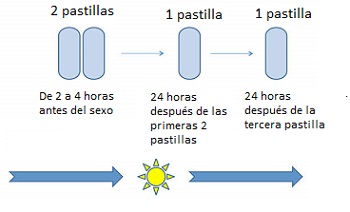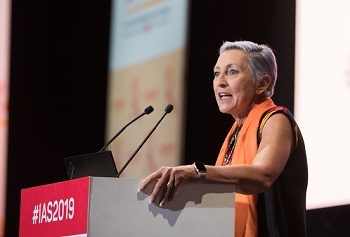Also available in: Español
In Mexico City, between July 21 and July 24, 2019, another edition of the IAS Conference on HIV Science (IAS 2019) was organized by the International AIDS Society
By: Javier Hourcade Bellocq
Source: Corresponsales Clave
Around 5,000 health professionals and researchers, as well as activists and civil society leaders in a lower proportion, gathered between July 21 and 24 to present and discuss the latest advances in the fight against AIDS. As usual, at times there were more people in the halls and walking around than inside the session rooms, but this did not affect the quality of the presentations, which have improved a lot, in my opinion.
Pharmaceutical laboratories, UN agencies, international NGOs and other entities put all their efforts, as usual, with various events, pre-conferences, remote events and parallel meetings; many of them of very dubious quality regarding contributions to the global HIV response. By doing so, they promote themselves without paying for tickets, hotels or food for our people, but they do not understand that delegates cannot be cut in half so that they can attend parallel events. However, what really matters is being part of the program and not the relevance.
Before it started
Latina Forum
Fundación Huésped organized the Latina Forum, a pre-conference training event which allowed to train and refresh the knowledge of 120 health professionals and 10 representatives of civil society. Regarding civil society, Fundación Huésped granted 10 full scholarships—without any conditions—so that the Team of Correspondents could bring regional leaders and two correspondents. Besides facilitating the participation of important regional leaders, this support allowed us to have three correspondents covering the event with a record number of articles. Please, check the full coverage here.
Community Forum
The International AIDS Society (IAS) participated in the organization of a civil society forum two days before the conference. This forum had 345 registered people, so we had to close registration, and many people were not able to join us.
The truth is that, when participation reached its highest level, there were only 120 participants in the room. Do we just attend another event and leave our seats empty? Do we tour? This is very unfortunate, since it has been an intense year of work for those who organized the event and got IAS to provide more resources, such as food and delegates. We have to reflect on the reason why we register for everything but do not attend in the end, especially because the Community Forum had the participation of key leaders—who directly engage in the mission of the Global Fund, WHO, UNAIDS, PAHO and UHC—who gave presentations and discussed the topics addressed.
It was also interesting to see how a significant number of delegates attended a session for a while, then stood up and walked to another one, and so on. They spread themselves thin.
There are always more people outside than inside the rooms, that’s why IAS is discussing the future of conferences. Delegates who travel to conferences to walk around, inside and outside, and share very little with their colleagues in their countries and communities have poor accountability and responsibility. It is time for civil society to demand accountability from people with scholarships. If not, we cannot complain later about those who stay at home and call us “participants of the AIDS tour”.
Once again, PrEP was one of the stars of the conference. Six months of evidence in the total number of research studies on its effectiveness, adherence and few secondary effects were presented. Finally, WHO and PAHO published guides for the use of PrEP based on events, better known as 2+1+1. In other words, if a person takes two PrEP pills at least two hours before intercourse, and then takes one the next day and another one the third day, that person will be as protected as if they had taken PrEP daily. This improves adherence, lowers the cost and reduces possible toxicities.
Slow-release PrEP is under research, as well as the use of patches, injections and even PrEP implants, which can last for a year with another drug called islatravir. The cure, the best ARV, but mainly the best PrEP, are the crown jewels which the pharmaceutical industry fights for. The question is, will we be able to pay for it?
What is still curious is that the WHO recommendation regarding PrEP based on events is just for gay men. And this is not because it does not work on transgender people or women, but rather because protocols have been created based on one population only. I doubt that the anatomy and molecular biology of a transgender person are far different than that of a gay man, but this modus operandi delays the access of other populations to scientific advances. Let’s imagine how many women and transgender women who work as sex workers every week, but on specific days, could benefit from 2+1+1. Science is often comfortable and, when it involves people who will benefit from its findings, it translates into human lives. We must demand studies and recommendations of PrEP based on events for all populations.
Dolutegravir, safe for women
After taking its time, WHO also announced the recommendation of using dolutegravir on women in reproductive age and pregnant women, since the use of this drug cannot be related to birth defects in babies, as in some cases reported in Africa. Dolutegravir is a safe drug.
These new recommendations have a very important impact, for instance, without going that far, on the crisis in Venezuela, as PAHO submitted a recommendation of exclusive procurement and distribution of a triple therapy, which included this medicine.
Antiretroviral treatment with pauses
A series of evidence about clinical studies were presented. They showed that taking some antiretrovirals only four days a week has the same effect and effectiveness compared to a daily intake.
“People with HIV are advised to take antiretroviral treatment every day, but there is evidence that some antiretrovirals maintain a sufficient level in the blood for several days, thereby controlling HIV even if a dose is skipped. Even though adherence to antiretroviral therapy in the long term is good, many people with HIV find it difficult to stick to perfect adherence year after year, and have shown interest in treatment strategies that might reduce the burden of taking medicines.” Aidmap on Quatuor, an essay supported by the French National Research Agency.
Important: There is not enough evidence on the effectiveness of the scheme with interruptions, so this should not be used yet. So far, it is not advisable to implement it.

Likewise, other clinical protocols proved that the combination of two specific ARV is as effective as the combination of three. This hypothesis was verified by the Gardel study, which originated in Argentina and led to updates of the Gemini and Tango studies.
In conclusion, I believe this conference has provided us with several good news, and that people who have been inside the session rooms have been able to understand the information we have shared above–and much more–with more details, which is something those who were in the halls have missed.
The IAS Conference on HIV Science is the event with the highest scientific quality. Like in CROI, researchers present their latest findings to the world. IAS 2019 may have had the highest participation rate of civil society in this type of events, since we know that international conferences on AIDS usually have more participation at a community level and include a more political discussion.
I think we left Mexico City with renewed hope about what science offers to reduce the number of new infections and find the functional cure of HIV. We also left Mexico wondering who will be able to pay for the new products.
I want to thank IAS for supporting the Community Forum, Fundación Huésped for the Latino Forum and scholarships, and UNAIDS for supporting our key correspondents. As the editor, I would also like to thank Francisco, Lídice and Dennis, who have covered the event in an amazing way as correspondents.
Sources: WHO, PAHO and Aidsmap
Pictures: IAS
All articles can be shared and published provided the source is cited.




